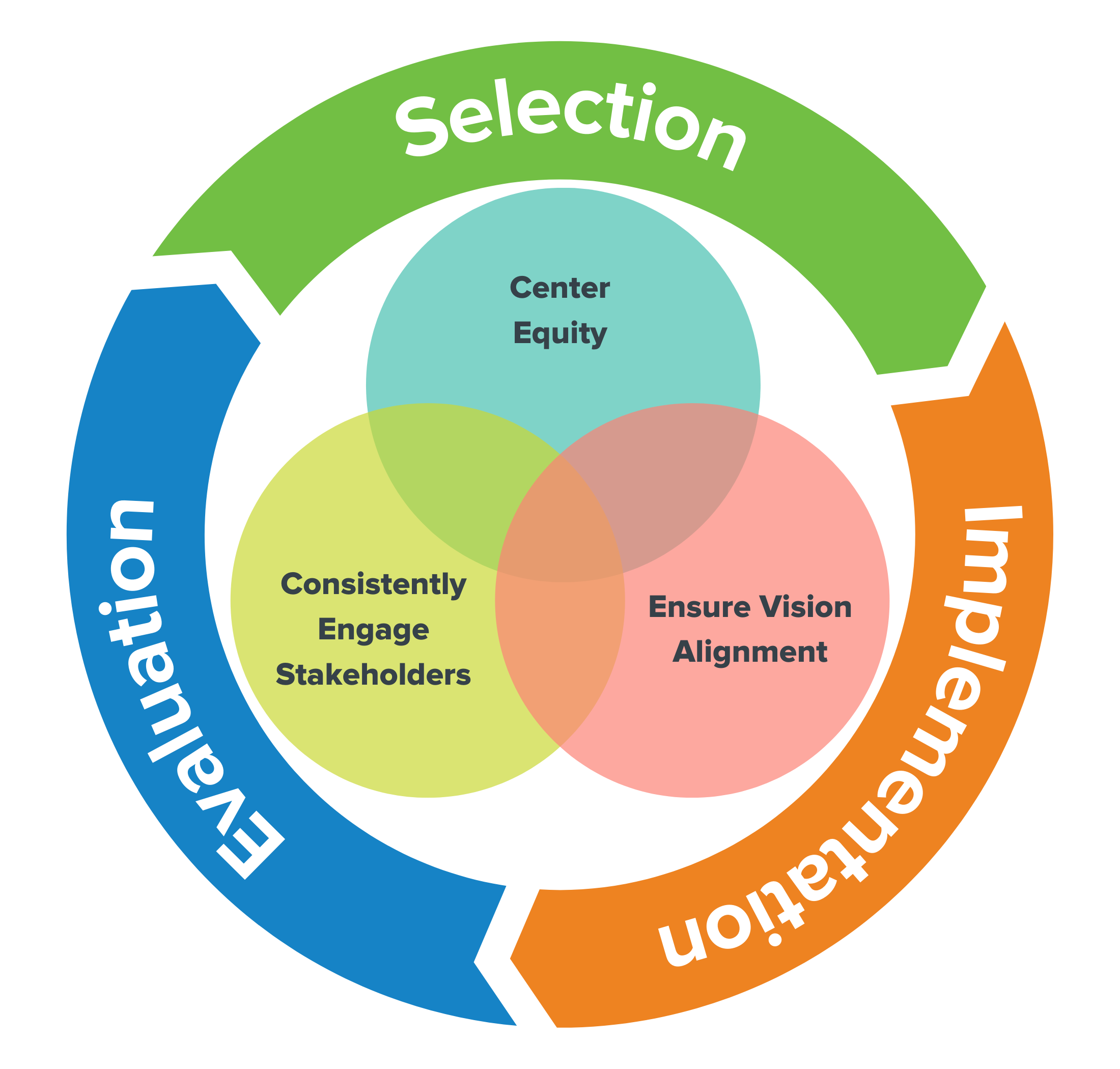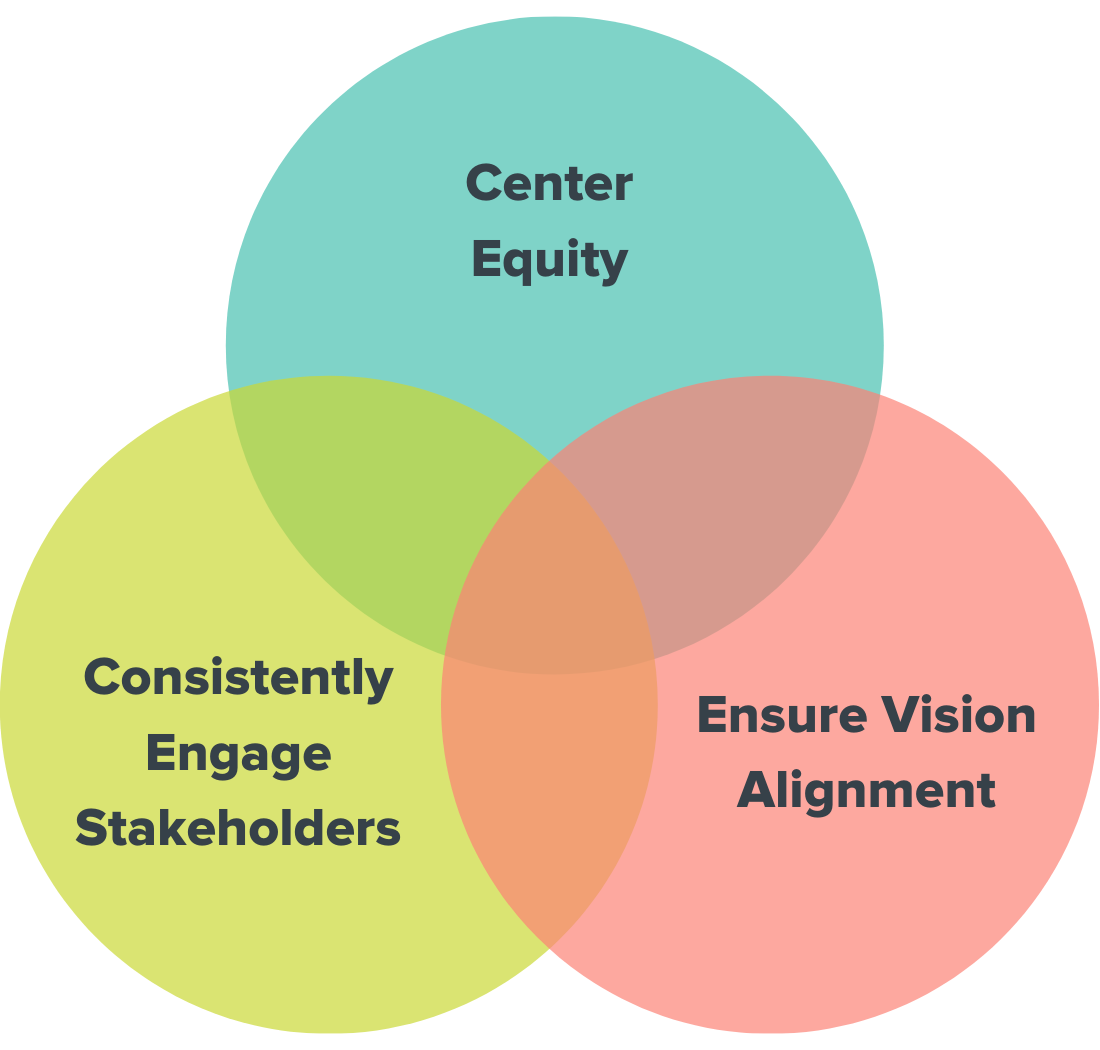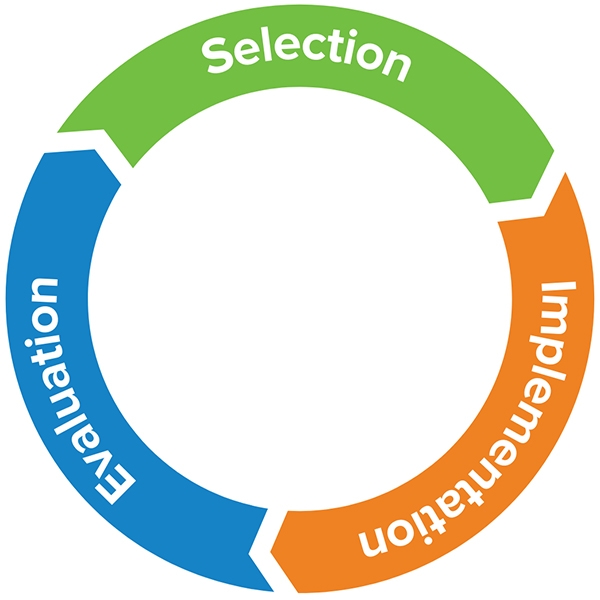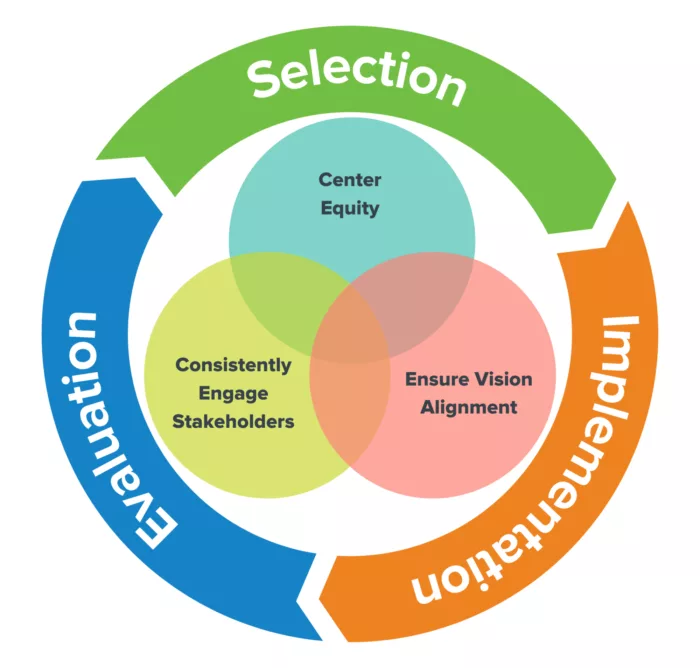To explore the full EdTech Systems Guide, click the button below.
EdTech Systems Guide
Developing and strengthening systems to ensure that edtech is effectively chosen, powerfully implemented, and properly evaluated for effectiveness and equity
In May 2021, the Massachusetts Department of Elementary and Secondary Education (MA DESE) released its EdTech Strategic Planning Guide: Sustaining Progress in Access and Equity, which offered school and system leaders guidance related to sustaining progress in access and equity through intentional and strategic edtech planning and resource allocation. The Learning Accelerator (TLA) partnered with MA DESE to build off of that work to develop and strengthen systems for edtech selection, implementation, and evaluation. This work aims to ensure that edtech is effectively chosen, powerfully implemented, and properly evaluated for effectiveness across the state.
The guide includes specific considerations that edtech leaders across Massachusetts may address depending on their unique context, (e.g., geographic setting; the type of edtech tool that they are making decisions about; their school or system demographics; the ways in which their school or system leadership teams may be structured). However, we have intentionally approached the cycle of edtech selection, implementation, and evaluation broadly to make it applicable across a diverse range of contexts, including those beyond Massachusetts. We believe this guide is a powerful resource for edtech leaders across the nation who are reimagining the systems they use to select, implement, and evaluate edtech.


Effective edtech systems are centered on equity, are aligned to a school or system’s vision for teaching and learning, and consistently engage stakeholders to ensure that the perspectives of those most impacted by edtech decisions are elevated and considered. Throughout this guide, we have addressed each of these principles in the following ways:
Center Equity
Edtech has the power to accelerate learning and disrupt persistent disparities, but when used unintentionally, it can perpetuate systemic barriers to access and opportunity. This guide has built in multiple “equity pauses,” which provide points to reflect on the equity implications of your technology, selection, implementation, and evaluation systems’ design. As you navigate the guide, look for blue “Equity Pause” call-out boxes to easily identify these points.
Ensure Vision Alignment
Edtech should be used in service of your school or system’s vision for teaching and learning, as well as for the operations that support this vision. This guide consistently asks you to return to this vision and use it as a ‘north star’ throughout your selection, implementation, and evaluation processes.
Consistently Engage Stakeholders
Edtech decisions directly impact your stakeholders, including students, their families, teachers, and school and system leaders. This guide calls for you to embed multiple, meaningful opportunities to engage all stakeholders within your selection, implementation, and evaluation processes. Because this principle is more tactical by nature, this guide includes a section of considerations for when and how to engage stakeholders. The steps outlined in this section of the guide can be tailored and implemented in various ways, and at various points in your edtech selection, implementation, and evaluation processes.

The steps outlined in this guide represent an ideal but theoretical process for the edtech selection, implementation, and evaluation cycle. In reality, your school or system is likely working across several points in this cycle in regards to a number of different edtech tools. It would not be practical or effective for you to follow each step exactly as outlined, without consideration for the specific systems and processes that you already have in place. Instead, we encourage you to make this guide actionable in your context by:
Engaging in honest reflection and auditing of your current edtech processes,
Starting with making small adjustments and scaling up new approaches as you go,
Intentionally breaking down silos around edtech when appropriate; and,
Leveraging available tools to help you apply the guidance in your own context.
Reflect and Audit
Your school or system already engages in its own edtech selection, implementation, and evaluation processes. Some may be more comprehensive or formal than others, and they likely have considerable overlap with the ones that have been outlined in this resource. As you work your way through the guide, take note of the ways in which you are already operating in alignment with the guidance provided here as well as any particular areas that could be modified or strengthened.
Start Small and Scale
We do not recommend fully redesigning your school or system’s approaches to edtech selection, implementation, or evaluation all at once. Instead, you might begin by identifying a starting place that feels most appropriate for your school or system, choosing one upcoming selection, implementation, or evaluation process, and then using it to begin iteratively improving on your current systems.
Break Down Edtech Silos
Unlocking the most powerful use of edtech tools requires you to think about technology as one element of a larger system. Edtech should not be considered an end in itself. Instead, it is a powerful tool that can be used to accomplish goals, streamline processes, and improve outcomes. As you redesign your systems, it is critical that you build bridges between departments and stakeholders whose goals your edtech aims to support and that you collaborate with these stakeholders to build sustainable edtech selection, implementation, and evaluation systems.

The guide is broken down into a series of activities within each section of the selection, implementation, and evaluation cycle. Further, each of these activities is segmented into concrete steps. We have developed multiple tools that can be used to help you navigate the guide, make sense of the advice, and apply the ideas you find useful in your own context.
Throughline Example
Throughout the guide, there are references to a single “throughline” example that follows one edtech leader from a fictional mid-sized school district in Massachusetts. The example is not meant to be an exemplar; rather, it highlights the guide's principles and suggested workflow in action to mirror your own potential implementation of this guidance. Just as in your districts, our example leader will have to make choices about their systems based on time and resource limitations.
Special Considerations Callouts
Throughout the guide, you will notice four icons meant to draw attention to specific considerations you might make during the edtech selection, implementation, and evaluation cycle related to opportunities to tailor your processes to your school or system's context, stakeholders (including students learning English and students receiving special education services), and equity.
Guide Workbook
We have developed a workbook to accompany this resource, which is embedded within the guide itself. This workbook provides templates, space for reflection and data tracking, and other activities you can use to make the guide actionable within your context. At the end of each section, you will be prompted to complete specific tasks in the accompanying workbook tied to the content of that particular section.
To explore the full EdTech Systems Guide, click the button below.
